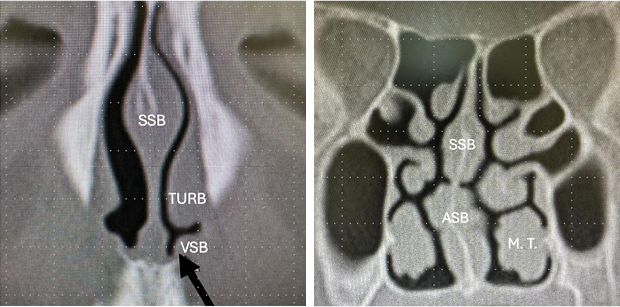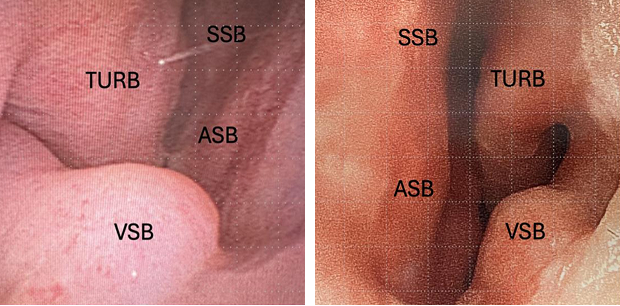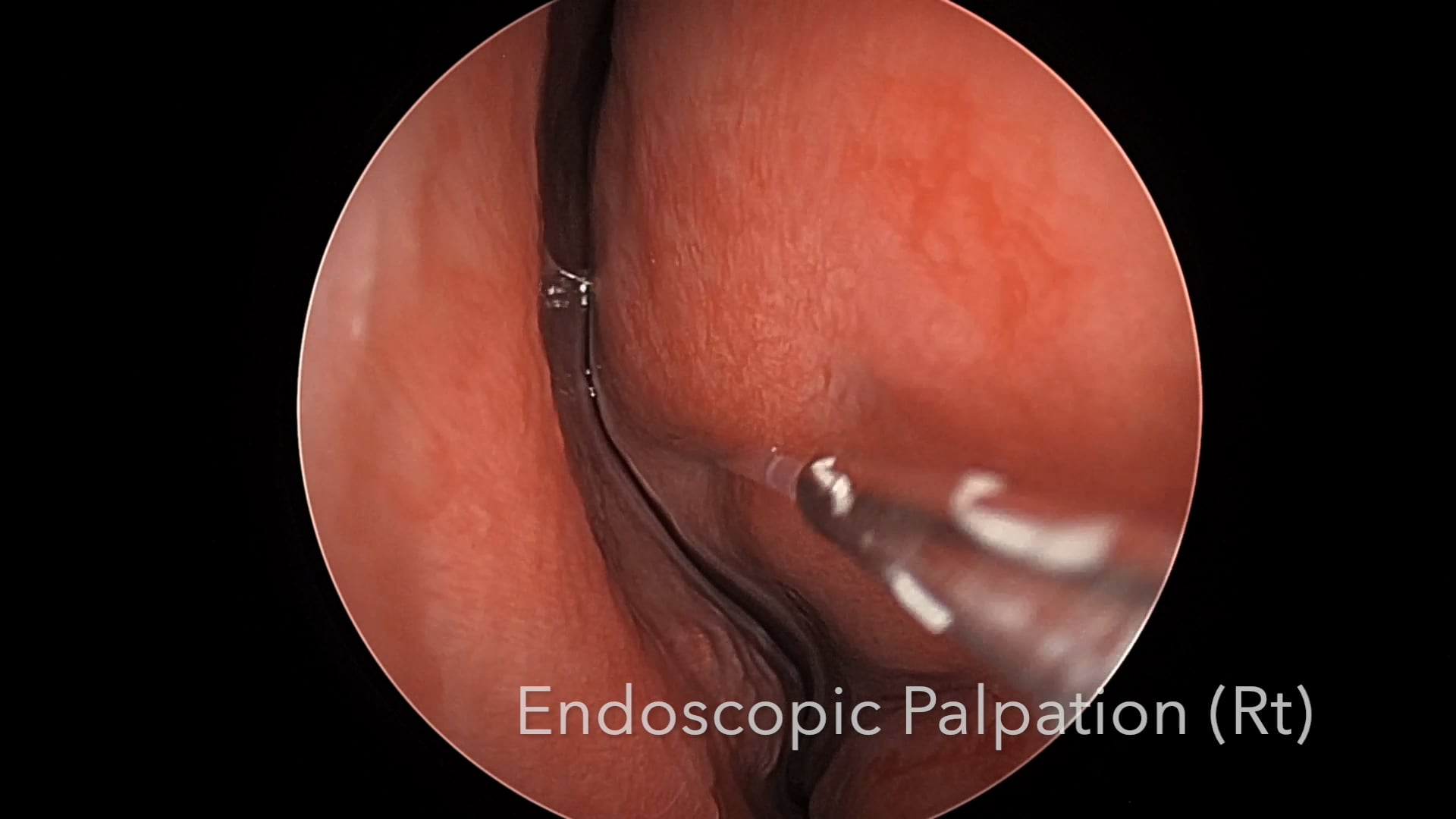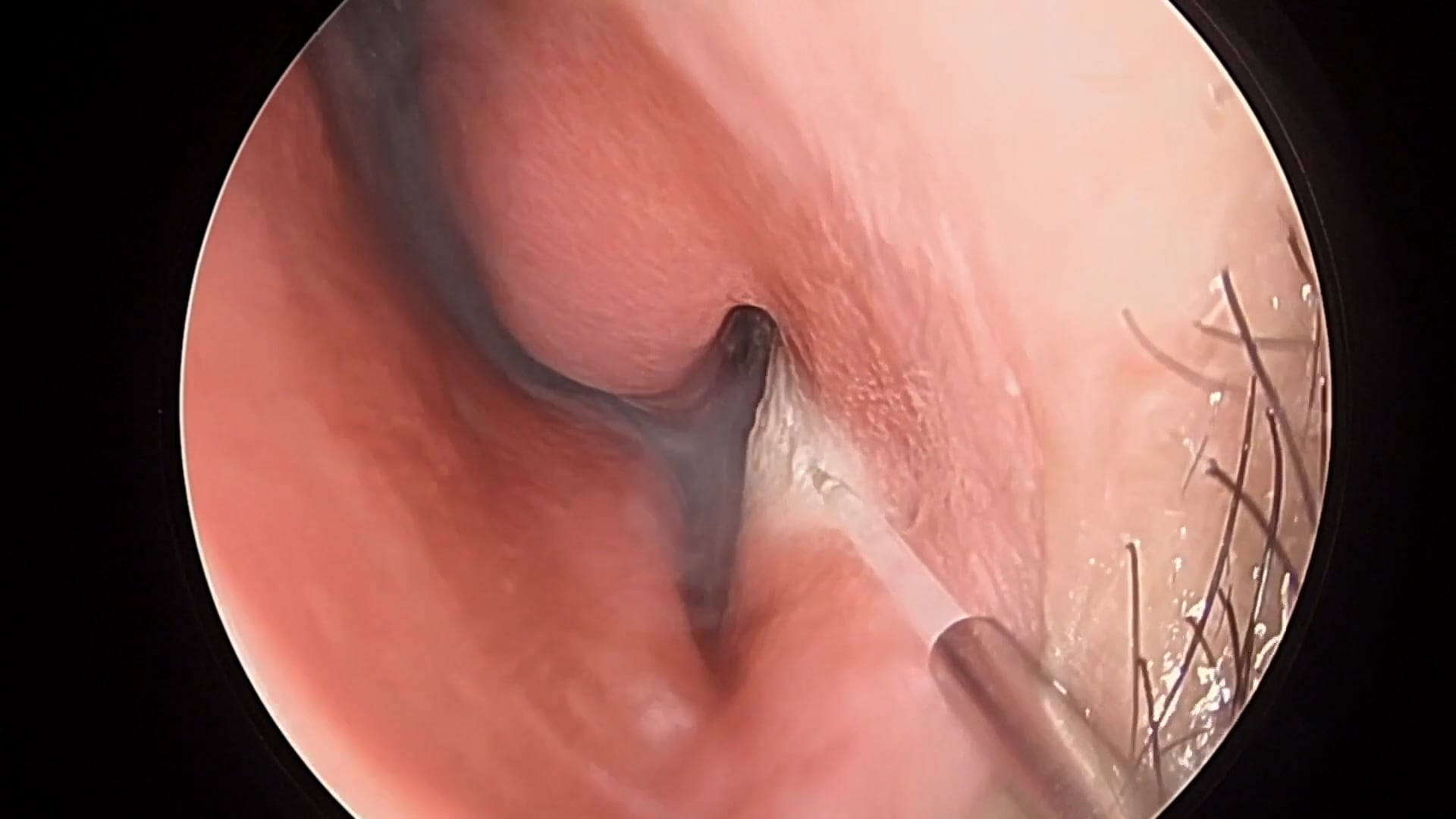The nose is a fascinating and complex organ designed to warm, humidify, and smell the air you breath. It also filters out harmful air particles and defends against microbes that can cause disease. To do this, the inside of your nose has a beautiful architecture of bones called turbinates that direct air through your nose and sinuses and down into your lungs. Layers of cells drape over these bones, providing blood flow and mucous that conditions, senses, and filters the air.
There are other specialized regions of cells that are particularly sensitive to air flow and that are regulated by your autonomic (or subconscious) part of your brain. When they sense cold or dry air, they fill with blood and secrete extra mucous. They also react to colds, viruses, and allergies, causing the symptoms of nasal congestion and runny nose. These areas are called ‘swell bodies’ (Figure 1). They are commonly found on the septum (septal swell body and accessory septal swell bodies) and nasal floor (vestibular swell body).

Figure 1
SSB – Septal Swell Body; VSB – Vestibular Swell Body; ASB – Accessory Swell Body; TURB – Inferior Turbinate (Anterior)
In some people, these areas become enlarged over time which can lead to blocked air flow not only when sick but also when otherwise healthy. This also includes chronic changes to the back of the inferior turbinate where air enters your throat (causing mulberry turbinate). The cause of these changes is not well understood, but it could be related to frequent colds and allergies or simply bad luck with how the bones and tissues developed over time. These symptoms can affect sleep, lead to “mouth breathing”, and cause snoring.
If these symptoms persist, a specialized physician, called an otolaryngologist (ear-nose-throat specialist, or ENT for short) may look inside your nose with special endoscopic instruments and a camera (Figure 2). He/she may also review a computed tomography (CT) scan of your nose and sinuses to further evaluate the anatomy and diagnose the cause for the symptoms (Figure 3). The physician will also look for pathologies such as enlarged turbinates, nasal septal deviation, and inflammation of your sinuses. Based on your medical history and nasal anatomy, the physician will develop a treatment plan. This may involve allergy treatment if applicable, which may include nasal sprays or other medications that reduce nasal inflammation and mucous secretion.

Figure 2
SSB – Septal Swell Body; VSB – Vestibular Swell Body; ASB – Accessory Swell Body; TURB – Inferior Turbinate (Anterior); M.T. – Mulberry Turbinate (Posterior)

Figure 3
SSB – Septal Swell Body; VSB – Vestibular Swell Body; ASB – Accessory Swell Body; TURB – Inferior Turbinate (Anterior)
If your nasal symptoms persist and do not go away with medications, there are procedures that can reduce nasal obstruction and restore proper air flow. Some techniques involve major surgery requiring general anesthesia and long recovery times. However, minimally invasive procedures are now available and can be performed while awake using only topical anesthesia. For example, endoscopic-guided laser ablation can be performed in the doctor's office for targeting in pinpoint precision the specific areas causing the obstruction in your nose without impacting healthy, adjacent tissue. No general anesthesia or operating room visits are required, the procedure is only a few minutes short, recovery is quick, and patients often report a sustained improvement in their quality of life. The videos below demonstrate different cases of this safe and effective procedure.


.jpg)

